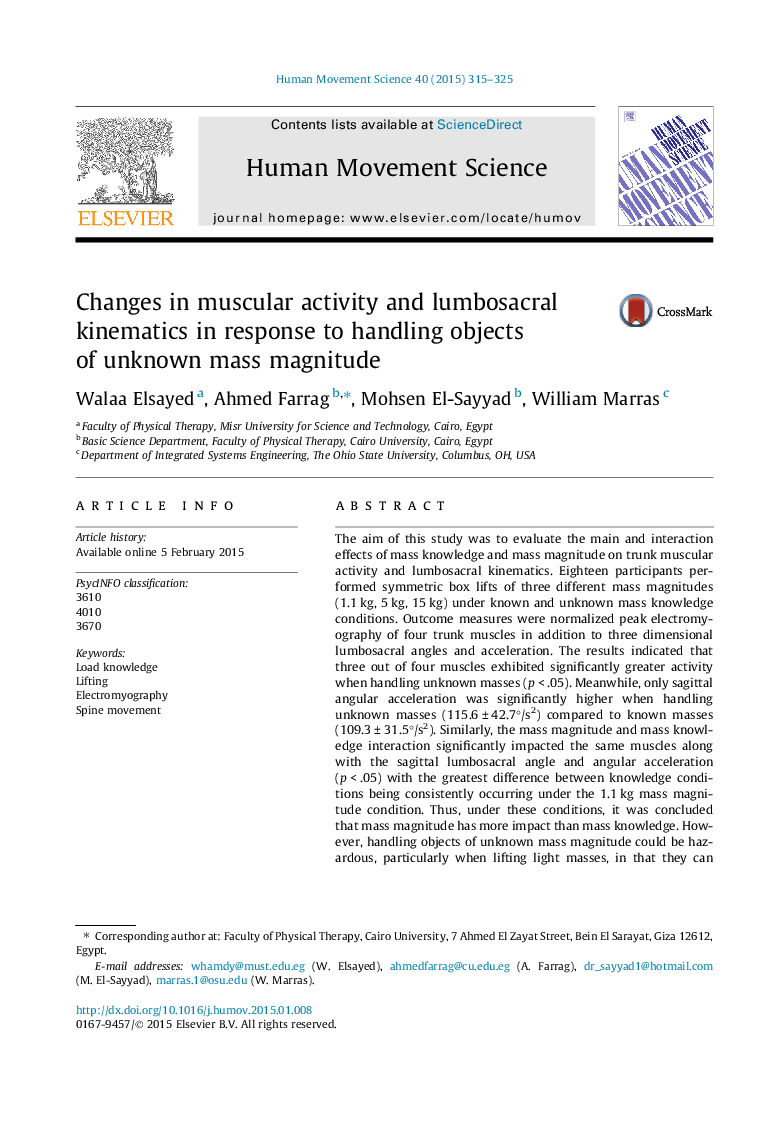| Article ID | Journal | Published Year | Pages | File Type |
|---|---|---|---|---|
| 7292133 | Human Movement Science | 2015 | 11 Pages |
Abstract
The aim of this study was to evaluate the main and interaction effects of mass knowledge and mass magnitude on trunk muscular activity and lumbosacral kinematics. Eighteen participants performed symmetric box lifts of three different mass magnitudes (1.1 kg, 5 kg, 15 kg) under known and unknown mass knowledge conditions. Outcome measures were normalized peak electromyography of four trunk muscles in addition to three dimensional lumbosacral angles and acceleration. The results indicated that three out of four muscles exhibited significantly greater activity when handling unknown masses (p < .05). Meanwhile, only sagittal angular acceleration was significantly higher when handling unknown masses (115.6 ± 42.7°/s2) compared to known masses (109.3 ± 31.5°/s2). Similarly, the mass magnitude and mass knowledge interaction significantly impacted the same muscles along with the sagittal lumbosacral angle and angular acceleration (p < .05) with the greatest difference between knowledge conditions being consistently occurring under the 1.1 kg mass magnitude condition. Thus, under these conditions, it was concluded that mass magnitude has more impact than mass knowledge. However, handling objects of unknown mass magnitude could be hazardous, particularly when lifting light masses, in that they can increase mechanical burden on the lumbosacral spine due to increased muscular exertion and acceleration.
Keywords
Related Topics
Life Sciences
Neuroscience
Cognitive Neuroscience
Authors
Walaa Elsayed, Ahmed Farrag, Mohsen El-Sayyad, William Marras,
